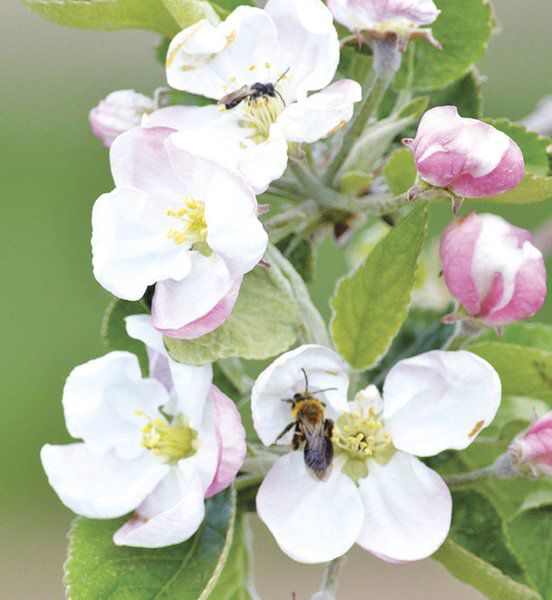Phenology and potential implications of climate change

How do you know when spring has begun? Is it the flow of maple sap? The first crocuses coming up through the snow? Ice out on local lakes? The arrival of the first red-winged blackbirds? The clamor of peepers? Apple trees and/or lilacs blooming?
Merriam-Webster defines phenology, which is derived from the Greek word “phaino” meaning to show or appear, as “a branch of science dealing with the relations between climate and periodic biological phenomena.” Think of it as a timeline or chronology of periodic natural events; such as when insects hatch or arrive; when flowers and plants emerge, bloom and produce seed; when migrating birds and insects (e.g. monarch butterflies) arrive, mate or nest, and depart; and how all of these function within ecosystems and respond to change.
Those correlations are often based on the bloom time of common flowering plants. Examples I’ve heard include planting peas when forsythia blooms; potatoes when the first dandelions bloom; beets, carrots, crucifers (e.g. cabbage, cauliflower, broccoli) when lilacs are in first leaf; beans, cucumbers and squash when lilac is in full bloom; tomatoes when lily-of-the-valley is in full bloom, and transplanting peppers, eggplant and melons when irises bloom.
Phenology is a key component of life on Earth. For example, many birds time their nesting so that eggs hatch when insects are available to feed nestlings. Similarly, insect emergence is frequently matched to leaf out in host plants. But many spring events are occurring earlier than in the past. And fall events are happening later. This is true everywhere in the world.
Researchers are unsure about what that means, exactly, for existing biological systems. They know that phenology influences the abundance and distribution of organisms (e.g. seed dispersal), ecosystem services (e.g. pollination; maintenance of biodiversity); air and water purification; regulation of disease-carrying organisms; decomposition and detoxification of wastes; food webs (interconnected food chains; remove one component and the entire web is affected); and global cycles of water and carbon, which play key roles in regulating the Earth’s climate by controlling the concentration of carbon dioxide in the atmosphere.
Technicians monitor plant and animal phenology to better understand how our changing climate is affecting both local and global ecosystems. When phenology and climate data are studied together, scientists can explore how climate factors influence the timing of seasonal biological events. For example, unusually warm early Spring weather may result in perennial Spring flowers and rhubarb plants emerging, or your apple trees budding, markedly earlier than expected. Earlier flowering may, in turn, give rise to an earlier allergy season.
Scientists know, too, that species are responding to climate changes at different rates, leading to ecological or phenological mismatches. This can be especially problematic for co-dependent species such as plants and pollinators. For example, if a plant species that depends on the arrival or emergence of pollinator flowers before the pollinators arrive or emerge, both the plants and the pollinators may experience declines in population.
Conversely, if a plant species emerges early enough to flower before a predator insect species (e.g. bud-eating beetle larvae), it may benefit from high flower and fruit production. Insects that rely on a single plant species as their food source may experience critical population declines if their emergence times are mismatched with the growing or flowering season of their host plant(s).
After several years of consistently collecting information you should be able to notice a pattern from which you can begin to connect events that would, otherwise, appear to be unrelated. It will also become obvious that these annual events do not occur on the same date every year, but change depending on the weather. You’ll also gain a better understanding of the effects changes in climate may have on plants’ life cycles.



Leave a Reply
You must be logged in to post a comment.